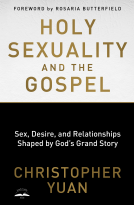
A Public Missiology
How Local Churches Witness to a Complex World
by Gregg Okesson
This title was previously available on NetGalley and is now archived.
Send NetGalley books directly to your Kindle or Kindle app
1
To read on a Kindle or Kindle app, please add kindle@netgalley.com as an approved email address to receive files in your Amazon account. Click here for step-by-step instructions.
2
Also find your Kindle email address within your Amazon account, and enter it here.
Pub Date Apr 21 2020 | Archive Date Apr 30 2020
Baker Academic & Brazos Press | Baker Academic
Talking about this book? Use #APublicMissiology #NetGalley. More hashtag tips!
Description
Outreach 2021 Resource of the Year (Cross-Cultural and Missional)
2020 ASM (American Society of Missiology) Book of the Year Award
One of Ten Outstanding Books in Mission Studies, Intercultural Theology, and World Christianity for 2020
How can Christians witness to the complexity of our world? Gregg Okesson shows that local congregations are the primary means of public witness in and for the world. As Christians move back and forth between their churches and their neighborhoods, workplaces, and other public spaces, they weave a thick gospel witness. This introduction to public missiology explains how local congregations can thicken their witness in the public realms where they live, work, and play. Real-life examples from around the world help readers envision approaches to public witness and social change.
Available Editions
| EDITION | Other Format |
| ISBN | 9780801098079 |
| PRICE | $30.00 (USD) |
| PAGES | 272 |
Featured Reviews
 Phillip C, Reviewer
Phillip C, Reviewer
Somewhere in history, missions came to mean going to another place to share the gospel. Maybe overseas, maybe just to another part of the country, but you had to leave and go to someplace other than where you live. Gregg Okesson writes that though this type of missions is needed, it can lead to neglect of where most people spend their time.
Okesson contends that we should be doing missional work wherever we are, work, the grocery, or anywhere that we are around people. We each have a personal mission field where we can share to gospel, and this field is woven from a complex web of relationships and people. To help with this, he shares how some churches have put this into practice.
I agree with his point that we need to reconsider how missions are defined. Christians are told in the Bible to always be ready to give people an answer when asked about the hope we have in Christ. We shouldn’t limit mission work to “over there.” The one issue I had with the book is its readability. I grew up and still live in a rural area. This book, to me, seems to be aimed at people who are more urban. I could understand the points made, it just seemed to be addressed to a different type of audience.
I received a complimentary copy from the publisher through NetGalley. All opinions are my own.
 Conrade Y, Reviewer
Conrade Y, Reviewer
Has the Western Church becoming too individualistic for her own good? Can a privatized religion do justice to the very identity of the Church? How relevant is missiology to ecclesiology? What does it take for the Church to live out an integrated sense of mission instead of delegating the work of mission to outsiders? These are some of the issues discussed in this book. The main thesis of this book is to rouse up the sleeping Church to move from passive talk about mission to active witness. Some people used to say that we can change the world one person at a time. In this book, the focus is not on that one person, but on the "we" as a community or congregational witness. This is because our vision of the gospel has become too self-limiting, to the point that it has made people hesitant about public witness. He says that the "thinness of our faith struggles to penetrate the thickness of the public realm." In other words, we cannot evangelize on our own. We need to evangelize as a community. Whatever negativity that has been associated with Church cannot be allowed to undermine the calling of the church. Do not throw out the proverbial baby (Church) with the bathwater (negative perceptions). Author and Professor Gregg Okesson integrates three key things in his model for public missiology: Congregations, Publics, and Witness. After some qualification, he then defines a public missiology as "congregational witness that moves back and forth across all “spaces” of public life in order to weave a thickness of the persons of the Trinity for the flourishing of all of life."
The first part of the book deals with "Public Witness." It explains the need for congregational witness. Using his experience in the African society, Okesson tells of the complexity of just trying to help an African village. Something as simple as tablets for clean water could lead to all sorts of misunderstandings, problems, and unintended knock-on effects. In the same way, whether it is planting a Church or just simply sharing the gospel, there is a whole complexity that are caused by multidimensional layers of contexts. The author's original purpose of being a missionary to the village soon involves becoming many different things. He had to deal with interpersonal issues, cultural differences, language difficulties, logistical nightmares, living conditions, etc. After living through these things and returning to the West, Okesson manages to highlight five things that are impeding the Church's congregational witness.
1) They have divorced theology from everyday life
2) Theology and Missiology have been separated
3) Lack of understanding of a thick public realm
4) Thin religion
5) Adopting simplistic solutions to complex problems.
He spends time to describe the meaning of public, to show us that publics is defined as a "common space of togetherness." We are invited to participate in this publics as kingdom people penetrating society at large for Christ. Witnessing is not about sharing points about salvation but needs the embodiment of God's work in us. Testimonies of how God has formed us connect with our audiences better than several pointers. The big story of course is the Missio Dei, of how witnessing is about movement with three dimensions: temporal, spatial, and people. All these dimensions are glimpses of who God is.
The second part of the book deals with congregational witness in the public domain. He guides us through a study of the local congregation. He cautions against using Church as some kind of an escape from public concerns. Some advantages in studying our congregations first would help us make sense of complexity beginning with our own. As we practise relational theology within, we learn to connect with others without. He uses three churches as examples. The first church is the Africa Brotherhood Church in Machakos, Kenya, where the Sunday gathering is one of lively joy and loud singing. It is more like a parade of sorts, a "thickness of doxology." It is like a Church where the "thick public" is within. The second church is in Canada, called the St Jax Anglican Church in Montreal. It is a historic church filled with rich history. In a culture that has moved from "place to space," this Church has used its geographical location ("thickness of place") to witness to the entire city of Montreal through opening up their premises for the general public. The third church is Bethel World Outreach Church in Nashville, USA. Ethnically and racially diverse, it is a megachurch with over 2000 members that practice a "thickness of identity." Okesson reflects upon the difficulty of cultivating diversity in the local church in America. All of these three churches show us how public witness can be done in various cultures.
My Thoughts
==============
The author has three objectives in this book. First, he aims to see the blessings behind a complex environment, something he calls "thick." Second, he helps us dig deeper into the layers of such thickness, so that we can understand the reasons behind the complexities. Third, he reminds us that our own congregations themselves are thick too. When we understand all three, we will learn to be less simplistic in our approach to evangelism in the public arena. We will understand the complexities of our cultures and in doing so, recognize that evangelism requires the whole church, of people from different sectors of society and skills, and to learn to let God lead us.
I applaud Okesson for a high ecclesiology treatment of the topic surrounding missions and evangelism. Far too often, we have diluted the gospel to some formula for distribution and dissemination. The gospel is living Word, not mere literature. The gospel lives in people and we need to live out the gospel to unbelievers at large. By engaging congregations to go out an be an evangelistic force, we will definitely be more effective in terms of making the gospel visible through our lives. This also reminds me of the commandment in the gospel of John. "34“A new command I give you: Love one another. As I have loved you, so you must love one another. 35By this everyone will know that you are my disciples, if you love one another.”" By our love, we will make Christ known. This is much needed antidote for an individualistic society in the West.
Okesson also does a great job in reminding us to study the contexts before we venture headlong into any witnessing effort. Study the cultural climate we are in. Exegete the local congregation. Examine ourselves. Seek God in prayer. Equip one another and affirm one another's spiritual gifting. When we are able to do that, we will be better able to witness together rather than mere private sharing. What is more difficult would be the paradigm change. Many believers have been fixated on old ways and archaic structures. Change is difficult and Okesson's proposal would seem radical for many. My challenge is this: What then is the alternative? For the Church is now living with way too many negative perceptions. Western churches are also becoming less committed to evangelism because they have become trapped in the multiplicity of Church programs and the complexity of Church problems. Church leaders would even say that if they could not solve their own problems in the first place, how are they going to help solve the problems of the world?
Theologically, I think Okesson has got it spot on. The Church is called to be the Mission for God. Church members are witnesses together. Those who defend individual gospel sharing should not misunderstand the author's intent. He is not downplaying the importance or need for one-to-one sharing. He is mainly showing us that complex situations require thicker engagement. In other words, if we are going to be reaching people in a complex world, we cannot use simplistic solutions. This does not mean we abandon simple methods or techniques. It means we need to change our own mental paradigm, to think that evangelism is either a one-off effort or a one-person job. If there is a critique, I would say that it takes a community to move a community. One may sow the idea but for the idea to germinate, we need more players. Perhaps, we can begin baby steps first by having Church members work together among themselves. The progress to working with other churches. Finally work with neighbourhood groups, and so on.
All in all, I believe Okesson has a great "African" message to tell us.
Gregg Okesson (PhD, University of Leeds) is dean of the E. Stanley Jones School of World Mission and Evangelism at Asbury Theological Seminary in Wilmore, Kentucky, and the Ira Gallaway and D. M. Beeson Professor of Leadership Development, Mission, and Evangelism. He previously served in East Africa as a church planter, educator, and administrator. He has also taught at Wheaton College. He and his family have lived in East Africa for 13 years.
Rating: 4.5 stars of 5.
conrade
This book has been provided courtesy of Baker Academic and NetGalley without requiring a positive review. All opinions offered above are mine unless otherwise stated or implied.
 Dean B, Educator
Dean B, Educator
Okeson's thesis that the church needs a public missiology addresses a number of contemporary concerns. Detailed with suitable examples beyond the contemporary North American context, the book really challenges readers seeking to understand a missional minded church.









